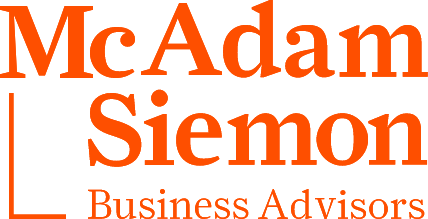News
Superannuation Guarantee
Posted: 09 November 2023

Workers owed $3.6bn in super guarantee
Workers are owed over $3.6 billion in superannuation guarantee according to the latest Australian Taxation Office estimates – a figure the Government and the regulators are looking to dramatically change.
Superficially, the statistics on employer superannuation guarantee (SG) compliance look pretty good with over 94%, or over $71 billion, collected without intervention from the regulators in 2020-21.
The net gap in SG has also declined from a peak of 5.7% in 2015-16 to 5.1% in 2020-21. The COVID-19 stimulus measures helped drive up the voluntary contributions with the largest increase in 2019-20, which the Australian Taxation Office (ATO) says they “suspect reflects the link between payment of super contributions and pay as you go (PAYG) withholding by employers. PAYG withholding is linked to the ability to claim stimulus payments such as Cash Flow Boost.”
Despite these gains, a little adds up to a lot and 5.1% equates to a $3.6 billion net gap in payments that should be in the superannuation funds of workers. Lurking within the amount owed is $1.8 billion of payments from hidden wages. That is, off-the-books cash payments, undisclosed wages, and non-payment of super where employees are misclassified as contractors.
In addition, the ATO notes that as at 28 February 2022, $1.1 billion of SG charge debt was subject to insolvency, which is unlikely to ever be recovered. Quarterly reporting enables debt to escalate before the ATO has a chance to identify and act on an emerging problem.
Employers should not assume that the Government will tackle SG underpayments the same way they have in the past with compliance programs. Instead, technology and legislative change will do the work for them.
Single touch payroll matched to super fund data
Single touch payroll (STP), the reporting mechanism employers must use to report payments to workers, provides a comprehensive, granular level of near-real time data to the regulators on income paid to employees. The ATO is now matching STP data to the information reported to them by superannuation funds to identify late payments, and under or incorrect reporting.
Late payment of quarterly superannuation guarantee is emerging as an area of concern with some employers missing payment deadlines, either because of cashflow difficulties (i.e., SG payments not put aside during the quarter), or technical issues where the timing of contributions is incorrect. Super guarantee needs to be received by the employee’s fund before the due date. Unless you are using the ATO’s superannuation clearing house, payments are unlikely to be received by the employee’s fund if the quarterly payment is made on the due date. The super guarantee laws do not have a tolerance for a ‘little bit’ late. Contributions are either on time, or they are not.
When SG is paid late
If an employer fails to meet the quarterly SG contribution deadline, they need to pay the SG charge (SGC) and lodge a Superannuation Guarantee Statement within a month of the late payment. The SGC applies even if you pay the outstanding SG soon after the deadline. The SGC is particularly painful for employers because it is comprised of:
- The employee’s superannuation guarantee shortfall amount – i.e., the SG owing.
- 10% interest p.a. on the SG owing for the quarter – calculated from the first day of the quarter until the 28th day after the SG was due, or the date the SG statement is lodged, whichever is later; and
- An administration fee of $20 for each employee with a shortfall per quarter.
Unlike normal SG contributions, SGC amounts are not deductible, even if you pay the outstanding amount.
And, the calculation for SGC is different to how you calculate SG. The SGC is calculated using the employee’s salary or wages rather than their ordinary time earnings (OTE). An employee’s salary and wages may be higher than their OTE, particularly if you have workers who are paid overtime.
It’s important that employers that have made late SG payments lodge a superannuation guarantee statement quickly as interest accrues until the statement is lodged. The ATO can also apply penalties for late lodgment of a statement, or failing to provide a statement during an audit, of up to 200% of the SG charge. And, where an SG charge amount remains outstanding, a company director may become personally liable for a penalty equal to the unpaid amount.
The danger of misclassifying contractors
Many business owners assume that if they hire independent contractors, they will not be responsible for PAYG withholding, superannuation guarantee, payroll tax and workers compensation obligations. However, each set of rules operates slightly differently and, in some cases, genuine contractors can be treated as if they were employees. There are significant penalties faced by employers that get it wrong.
A genuine independent contractor who is providing personal services will typically be:
- Autonomous rather than subservient in their decision-making;
- Financially self-reliant rather than economically dependent on your business; and
- Chasing profit (that is, a return on risk) rather than simply accepting a payment for the time, skill and effort provided.
‘Payday’ super from 1 July 2026
The Government intends to introduce laws that will require employers to pay SG at the same, or similar time, as they pay employee salary and wages. The logic is that by increasing the frequency of SG contributions, employees will be around 1.5% better off by retirement, and there will be less opportunity for an SG liability to build up where the employer misses a deadline.
Originally announced in the 2023-24 Federal Budget, Treasury has released a consultation paper to start the process of making payday super a reality. Subject to the passage of the legislation, the reforms are scheduled to take effect from 1 July 2026.
What is proposed?
The consultation paper canvasses two options for the timing of SG payments: on the day salary and wages are paid; or a ‘due date’ model that requires contributions to be received by the employee’s superannuation fund within a certain number of days following ‘payday’. A ‘payday’ captures every payment to an employee with an OTE component.
The SGC would also be updated with interest accruing on late payments from ‘payday’.
Currently, 62.6% of employers make SG payments quarterly, 32.7% monthly, and 3.8% fortnightly or weekly.
We’ll bring you more on ‘payday’ super as details are released. For now, there is nothing you need to do.
Fixed-term employment contracts limited to 2 years
From 6 December 2023, employers can no longer employ an employee on a fixed-term contract that:
- is for 2 or more years (including extensions)
- may be extended more than once, or
- is a new contract:
- that is for the same or a substantially similar role as previous contracts
- with substantial continuity of the employment relationship between the end of the previous contract and the new contract, and either:
- the total period of the contracts is 2 or more years,
- the new contract can be renewed or extended, or
- a previous contract was extended.
The changes were introduced as part of the Pay secrecy, job ads and flexible work amendments. See the Fair Work Ombudsman’s website for more details.
Warning: Redrawing investment loans
The ATO estimates that incorrect reporting of rental property income and expenses is costing around $1 billion each year in forgone tax revenue. A big part of the problem is how taxpayers are claiming interest on their investment property loans.
We’ve seen an uptick in ATO activity focussing on refinanced or redrawn loans. This activity is a result of a major data matching program of residential property loan data from financial institutions from 2021-22 to 2025-26. This data is being matched to what taxpayers have claimed on their tax returns. Those with anomalies can expect contact from the ATO to explain the discrepancy.
If you have an investment property loan and redraw on the loan for a different purpose to the original borrowing, the loan account becomes a mixed purpose account. Interest accruing on mixed purpose accounts need to be apportioned between each of the different purposes the money was used for.
On the other hand, if the redrawn funds are used to produce investment income, then the interest on this portion of the loan should be deductible.
For example, if you have redrawn on the loan to pay for a private holiday, or pay down personal debt, then the interest relating to this portion of the loan balance is not deductible. Not only will the interest expenses need to be apportioned into deductible and non-deductible parts, but repayments will normally need to be apportioned too.
Withdrawals from an offset account are treated as savings rather than a new borrowing. If you have a loan account and an interest offset account is attached to this account that reduces the interest payable on the loan, withdrawing funds from the offset account will typically increase the amount of interest accruing on the loan, but won’t change the deductible percentage of the interest expenses. That is, when you withdraw funds from the offset account this is really a withdrawal of savings and won’t impact on the extent to which interest accruing on the loan account is deductible.
If you have a home loan that was used to acquire your private home and you have funds sitting in an offset account, withdrawing those funds to pay the deposit on a rental property won’t enable you to claim any of the interest accruing on the home loan. However, if you redraw funds from the home loan to acquire a rental property then interest accruing on this portion of the loan should be deductible. The tax treatment always depends on how the arrangement is structured.
Think you might have a problem? Contact us and we can investigate the issue before the ATO contact you.
Quote of the month
“Do your little bit of good where you are; it’s those little bits of good put together that overwhelm the world.”
Desmond Tutu, Anglican Bishop and theologian
Note: The material and contents provided in this publication are informative in nature only. It is not intended to be advice and you should not act specifically on the basis of this information alone. If expert assistance is required, professional advice should be obtained.
If you have questions, please contact us.
McAdam Siemon Business Advisors .… Adding value, every step of the way.
